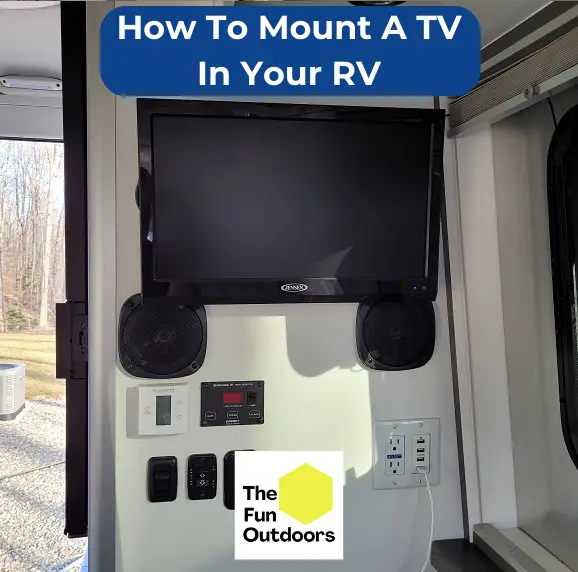Mounting a TV in an RV can be a great way to bring entertainment on the road, but it can be challenging to find the right TV mount and install it properly without damaging your rig. We’ve put together this guide to help you know how to mount a tv in your RV flawlessly.
Mounting a TV in an RV is as simple as following these 6 simple steps: find a good location for your RV TV mount, gather your tools, drill the pilot holes for the mount, attach the mounting bracket to the RV wall, attach the mounting plate to the TV, and hang the TV on the RV wall.
Key Takeaways
- Mounting a TV in an RV can be a straightforward process with the right tools and knowledge.
- Essential steps include choosing the right TV mount, installing it securely, and managing cables.
- Additional considerations include securing the TV for transportation and choosing the right TV for your RV.
How To Mount A TV In An RV: 6 Easy Steps
Mounting a TV in an RV can be a great way to add some entertainment to your travels. It can be challenging to do it correctly, and doing it wrong can be a safety risk or can cause damage to your RV.
In this section, we will provide you with a step-by-step guide on how to mount a TV in your RV.
Preparation Before Mounting
Before mounting your TV, you need to make sure that you have the right tools and materials. You will need:
- TV mounting bracket
- Mounting plate
- Power drill
- Masonry bits
- Phillips head bit
- Screws
- Level
Step 1: Find The Best Location For Your RV TV Mount

The first step in mounting a TV in your RV is to find the best location for your TV mount. You want to make sure that the spot you choose will be sturdy enough to hold your TV.
Many RVs have a dedicated spot where the wall is specially reinforced to handle an RV TV mount, and it is clearly marked, usually with the words “TV Backer Location” or a similar wording.
It’s also essential to consider the viewing angle and the distance from where you will be sitting.
See Related: How To Hang Things on RV Walls
Step 2: Gather Your Tools and Materials
Once you have found the best location for your TV mount, it’s time to gather your tools and materials. Make sure that you have everything you need before you start drilling.
Step 3: Drill The Pilot Holes

Using your power drill and masonry bits, drill the pilot holes into the RV wall where you want to mount your TV. Make sure that the holes are level and straight.
Most TV mounts come with a template for you to use to ensure the pilot holes are spaced correctly.
Step 4: Attach The TV Mounting Bracket To The RV Wall
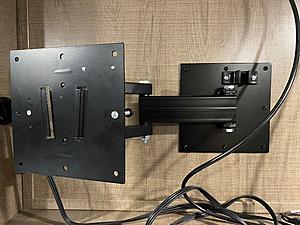
Attach the TV mounting bracket to the RV wall using screws and a Phillips head bit. Make sure that the bracket is level and secure, and test it by pulling down on it slightly to ensure it can hold the weight of the TV.
Step 5: Attach The Mounting Plate To Your TV
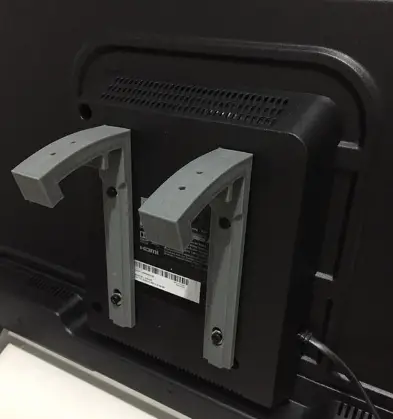
Attach the mounting plate to the back of your TV using screws and a Phillips head bit.
Step 6: Hang The TV On The RV TV Wall Mount
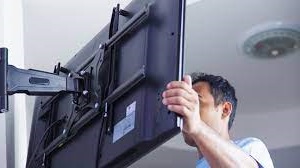
Finally, hang your TV on the RV TV wall mount. Make sure that it is securely attached to the bracket and that it is level.
By following these six easy steps, you can mount a TV in your RV and enjoy your favorite shows and movies while on the road.
Managing the Cables
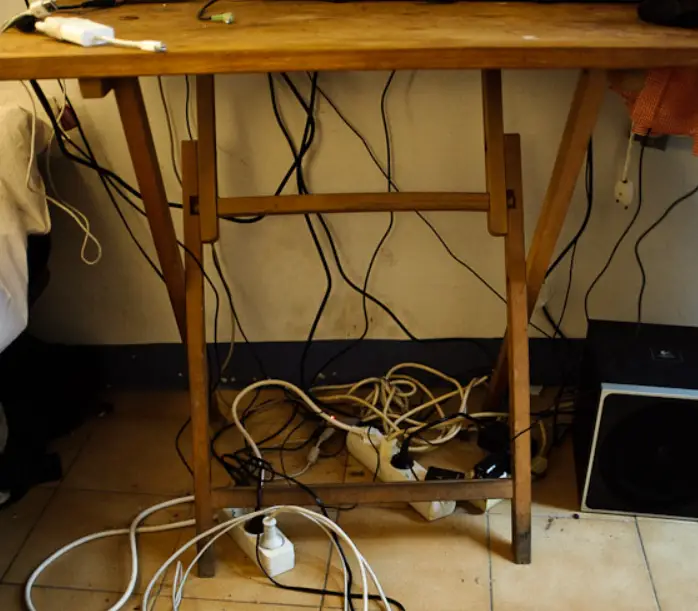
Mounting a TV in an RV can be tricky, especially when it comes to managing the cables. However, with a little bit of planning and some simple tools, it can be done easily. Here are a few tips to help you manage the cables when mounting a TV in your RV.
Use Cable Covers
One of the easiest ways to manage cables is to use cable covers. These covers will help keep the cables organized and prevent them from getting tangled up. Cable covers are available in different sizes and colors, so you can choose the one that best fits your needs and matches your RV’s interior.
Plan the Cable Route
Before mounting the TV, it’s important to plan the cable route. This will help ensure that the cables are neatly and safely tucked away. Start by identifying the location of the TV and the power outlet. Then, plan the route for the cables, making sure to avoid any obstacles or sharp edges that could damage the cables.
Use Zip Ties
Zip ties are a great way to keep cables organized and prevent them from getting tangled up. Use zip ties to bundle the cables together and keep them neat and tidy. You can also use zip ties to attach the cables to the wall or the TV mount, which will help keep them in place.
Use Cable Clips
Cable clips are another useful tool for managing cables. These clips can be attached to the wall or the TV mount, and they provide a secure and organized way to route the cables. Cable clips are available in different sizes, so you can choose the one that best fits your needs.
Hide the Cables
If you want to hide the cables completely, you can use a cable management kit. These kits include everything you need to hide the cables behind the wall or the TV mount. Cable management kits are easy to install and will give your RV a clean and professional look.
Understanding Different Types of TV Mounts
When it comes to mounting a TV in an RV, it’s important to understand the different types of mounts available. Each type of mount is installed differently and offers different benefits. Here are the most common types of TV mounts:
Fixed Mounts
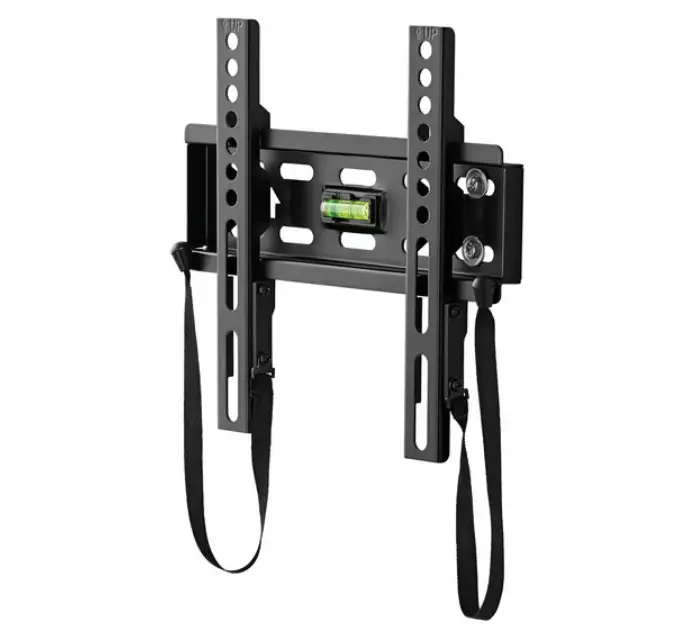
Fixed mounts are the most basic type of TV mount. They attach the TV directly to the wall and do not allow for any movement or adjustment. Fixed mounts are typically the most affordable option and are best for TVs that will be in a single location.
Adjustable Arm Mounts
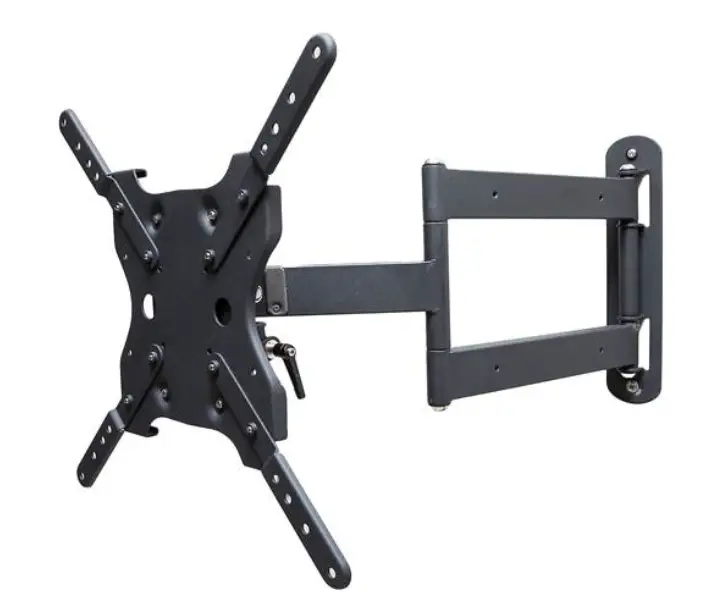
Adjustable arm mounts have a single arm that allows the TV to be pulled away from the wall and adjusted to different angles. These mounts are ideal for RVs where space is limited and the TV needs to be adjusted for different viewing positions.
Articulating Mounts
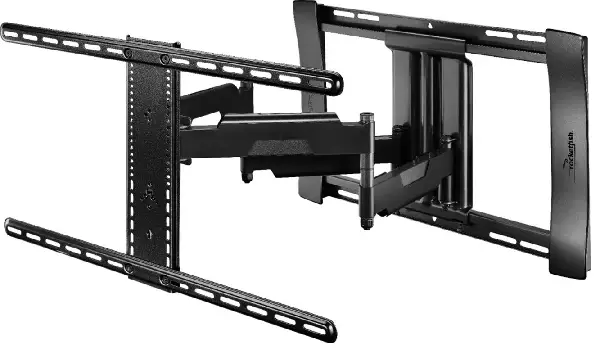
Articulating mounts are similar to adjustable arm mounts, but they have two arms that allow for even more movement and adjustment. These mounts are best for larger TVs and RVs where multiple viewing positions are needed.
Tilt Mounts
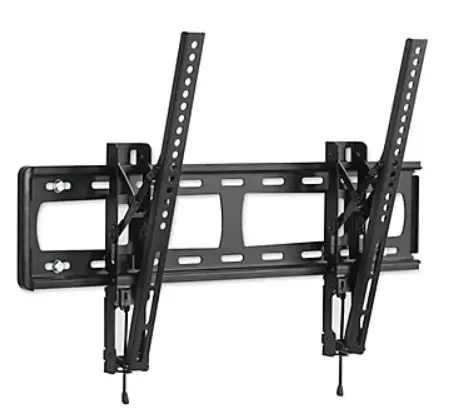
Tilt mounts allow the TV to be tilted up or down for better viewing angles. These mounts are best for RVs where the TV will be mounted high on a wall or in a cabinet.
Ceiling Mounts
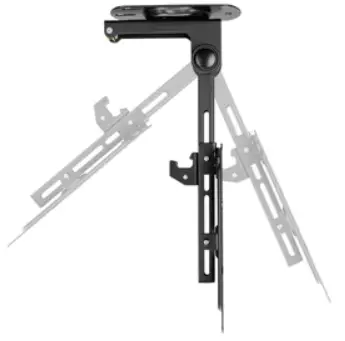
Ceiling mounts are ideal for RVs with limited wall space or for TVs that need to be mounted in a central location. These mounts attach to the ceiling and allow the TV to be adjusted and tilted for optimal viewing angles.
When selecting a TV mount for an RV, it’s important to consider the size and weight of the TV, as well as the type of mount that will work best in the available space. Some popular options for RV TV mounts include the Perlesmith RV Lockable TV Wall Mount and the RV Outside TV Mount. It’s important to choose a mount that is specifically designed for use in an RV to ensure that it is secure and safe for travel.
Choosing the Right TV for Your RV
When it comes to choosing a TV for your RV, there are several factors to consider. One of the most important considerations is the size of the TV. A large TV might seem appealing, but it can take up valuable space in your RV. Therefore, it’s important to choose a TV that fits comfortably in your RV without compromising on the viewing experience.
Another important factor to consider is the weight of the TV. The studs in your RV’s walls might not be strong enough to support heavier models. Therefore, it’s important to choose a lightweight flat-screen TV that still meets your needs.
In addition to size and weight, the viewing angle is also an important consideration. The viewing angle refers to the angle at which you can comfortably watch the TV without experiencing any distortion or glare. Therefore, it’s important to choose a TV with a wide viewing angle that can be viewed comfortably from different positions in your RV.
When it comes to the type of TV, LED TVs are a popular choice for RVs. LED TVs are energy-efficient, lightweight, and offer a high-quality viewing experience. They are also available in a range of sizes, making it easy to find one that fits comfortably in your RV.
Securing the TV for Transportation
When it comes to traveling with a TV in an RV, it is essential to secure it properly to avoid damage during transportation. Whether you have an overhead, tilted, or removable RV TV mount, there are several ways to keep your TV safe and secure while on the road.
One of the simplest ways to secure your TV is to use straps. These can be purchased at most RV supply stores and are designed to keep the TV in place during transportation. Simply wrap the straps around the TV and secure them to the wall or cabinet. This will prevent the TV from moving around while you’re on the road.
If you have a removable RV TV mount, it’s important to remove the TV before hitting the road. While these mounts are designed to be secure, they can still be jostled during transportation, which can cause damage to the TV or the mount itself. By removing the TV and storing it in a secure location, you can ensure that it stays safe during your travels.
For overhead or tilted RV TV mounts, it’s important to make sure that the TV is properly secured before hitting the road. This may involve adjusting the mount to ensure that the TV is level and won’t move around during transportation. It’s also a good idea to use straps or other securing devices to keep the TV in place.
Additional Considerations For Mounting A TV In An RV
When mounting a TV in an RV, there are a few additional considerations that should be taken into account to ensure a safe and secure installation.
First, consider the RV’s antenna system. The TV mount should be installed in a location that doesn’t interfere with the RV antenna’s ability to receive signals. It’s also important to make sure that the TV is compatible with the RV’s antenna system. Some TVs may require an additional antenna or signal booster to work properly in an RV.
Secondly, the viewing angle should be considered when selecting the location for the TV mount. The TV should be mounted at a height and angle that allows for comfortable viewing from the seating area. It’s also important to make sure that the TV doesn’t obstruct any important counters or cabinets in the RV.
Thirdly, RVers should ensure that the TV mount they select is compatible with their TV’s size and weight. It’s important to choose a mount that can securely hold the TV in place during travel.
Finally, if the RV’s walls are not thick enough to support the TV mount, a solution such as a backing plate or additional support brackets may be necessary to ensure a secure fit.
See Related: How to Watch TV in RV Without Cable & RV Mobile Hotspot Plans Compared
Frequently Asked Questions
Can You Mount A Regular TV In An RV?
Yes, you can mount a regular TV in an RV. However, it is important to keep in mind that if the TV mount has an adjustable arm that doesn’t lock, you should remove the TV from the mount during travel. Additionally, you may need to replace the mounting screws for the wall as many TV mount kits are not constructed with RVs in mind.
What’s The Best Kind Of TV For An RV?
There is no one “best” kind of TV for mounting in an RV. It’s most important to consider the size of the RV and the placement of the TV. Some RVs may have pre-installed mounts or designated areas for mounting a TV, while others may require more creativity and ingenuity.
Refer to your RV’s owner’s manual to see about any maximum TV sizes or specific TV types that it can handle.
How Can I Mount a TV In My RV Without Studs?
If you are unable to locate studs in your RV’s walls, there are still other options for mounting a TV. One option is to use toggle bolts or anchors to secure the mount to the wall. Another option is to mount the TV to the ceiling using an RV TV ceiling mount.
Can I Mount A TV On The Outside Of My RV?
While it is technically possible to mount a TV on the outside of an RV, it is not recommended. Outdoor TVs are designed specifically for outdoor use and are built to withstand the elements. Regular indoor TVs are not designed for outdoor use and can be damaged by exposure to moisture, temperature fluctuations, and other outdoor elements.

